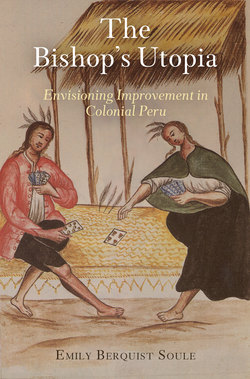The Bishop's Utopia

Реклама. ООО «ЛитРес», ИНН: 7719571260.
Оглавление
Emily Berquist Soule. The Bishop's Utopia
Отрывок из книги
The Bishop’s Utopia
Peter C. Mancall, Series Editor
.....
By the 1530s, the injustices against the Indians had multiplied so many times that Spanish bureaucrat Vasco de Quiroga penned a treatise about the legal and ethical wrongs of Indian treatment in New Spain and sent it off to Madrid. In addition to listing countless injustices, Quiroga’s Information on the Law provided a blueprint for how the Crown might raise an improved society from the ashes of destruction in America. To conceive of this new colony, Quiroga drew on one of the visionary works of his day: Thomas More’s Utopia. Like More, he imagined a society composed of extended families that shared community property. Children would receive free primary education, as well as instruction in farming techniques and Christian doctrine. The towns that he would create for the Indians would feature free hospitals to care for the elderly and infirm. They would be overseen by just Spanish officials and priests. The Indians who came to reside in his so-called pueblo-hospitales had to contribute to the communal lifestyle by working in trades, crafts, or agriculture. They were even given rights over their property, so they were able to pass it on to their children. Quiroga had faith in his agenda because he was convinced that the Indians were a childlike, uncorrupted race whose souls could be carefully molded—like “soft wax”—through evangelization and proper socialization.31
To make his utopian vision a reality, Quiroga purchased portions of the land that he needed and requested that local landowners donate the rest. He relied on the Indians themselves to help erect the settlements: they would build the thatched huts that would be their homes, they would adorn the churches where they would worship, and they would farm the fields that would provide them with sustenance. To further entice them, he offered baptisms and hosted games and activities for children. Soon Indians who had no prior sustained contact with Spaniards were voluntarily arriving at Santa Fé de México, Santa Fé de Laguna, and Santa Fé del Rio—and choosing to stay. Quiroga ensured that the towns and the hospitals would have a steady supply of Spanish priests when he founded the College of San Nicolás in Pátzcuaro, which would train clerics in native languages. By 1534, news of his efforts had reached Madrid, and Charles signed a royal decree granting his projects official approval. Two years later, he was rewarded when he was promoted to become bishop of Michoacán. Quiroga’s utopia enjoyed the support of the Crown, administrators in America, and the townspeople themselves. The hospitals operated for thirty years. By 1570, the town of Santa Fé de México was home to around 500 Indians. Their descendants still live nearby.32
.....